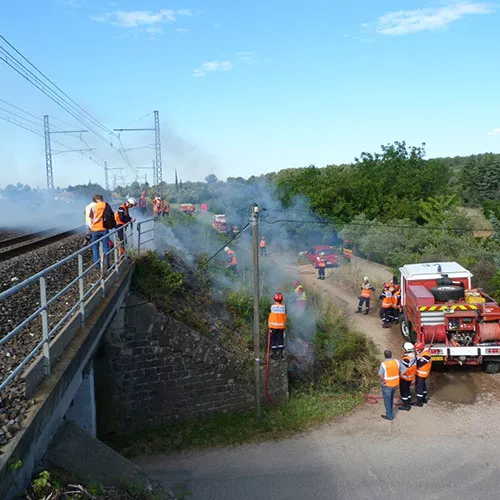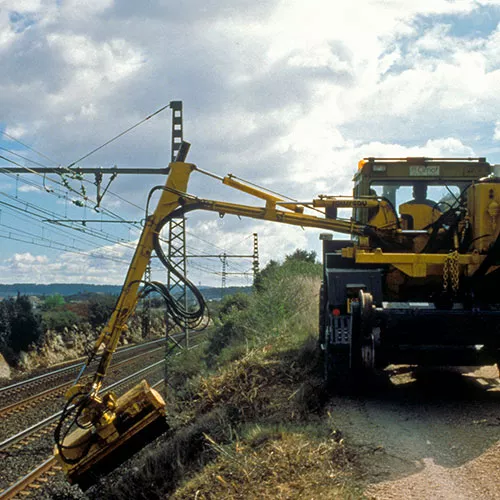Trackside fires
Learn about our trackside fire management procedure and prevention measures.
How do trackside fires start?
Fires near the tracks can start at any time of the year, but are more frequent in the summer, when temperatures are high, especially during droughts. We call them “embankment fires”.
They can start for several reasons that are either:
- Unrelated to our operations, such as lightening, stubble burning (when farmers burn their fields after the harvest), a lit cigarette butt, carelessness, or malicious acts, or
- Related to our operations, such as sparks generated by train wheels scraping the tracks during braking.

A three-step firefighting procedure
When a fire starts on or near the tracks, we immediately trigger a three-step procedure:
- we suspend service on the track
- we call the firefighters in
- we cut power supply to the area if deemed necessary by the firefighters.
How do fires affect train traffic?
Typically, these incidents affect traffic in the area. Both SNCF and the firefighters strive to minimize the impact and get trains back up and running as quickly as possible.
What do we do to prevent fires?

We like to be out ahead of the problem, and depending on the distance from the track, apply different preventive measures:
- Far from the track, we clear brush either manually or mechanically.
- Closer to the tracks, we mow and weed the embankment using a weed-control train or lorry, and prune surrounding trees.
- Directly on the tracks, we apply an eco-friendly preventive chemical treatment to stop growth of plants that could fuel fires.
Share the article